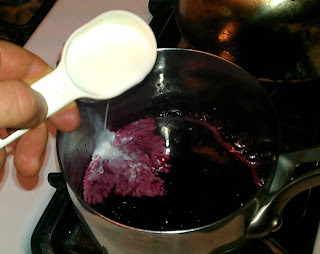To get a copy of this recipe, just click HERE.
 Some variations exist, but most sources agree that Fettuccine
Alfredo was invented by Alfredo De Lelio, owner of Ristorante
Alfredo alla Scrofa in Rome, around 1914. With his wife experiencing a difficult pregnancy, De Lelio was trying to put together a dish she could keep down. Eventually he tried a very rich combination of butter, cheese and pasta that Mrs.
De Lelio not only held down, but also loved so much that it
was quickly added to the menu at his restaurant. (The part I’m not sure whether or not to believe
came next, when the honeymooning Hollywood power couple Douglas Fairbanks and Mary
Pickford, the Brad and Angelina of their day, supposedly went to Alfredo’s
restaurant and had the dish, which at the time he called “Fettuccine al Triplo Burro” (triple-butter fettuccine). The resultant news
coverage became instrumental in the dish crossing the ocean to America, and a new culinary star was born.
Some variations exist, but most sources agree that Fettuccine
Alfredo was invented by Alfredo De Lelio, owner of Ristorante
Alfredo alla Scrofa in Rome, around 1914. With his wife experiencing a difficult pregnancy, De Lelio was trying to put together a dish she could keep down. Eventually he tried a very rich combination of butter, cheese and pasta that Mrs.
De Lelio not only held down, but also loved so much that it
was quickly added to the menu at his restaurant. (The part I’m not sure whether or not to believe
came next, when the honeymooning Hollywood power couple Douglas Fairbanks and Mary
Pickford, the Brad and Angelina of their day, supposedly went to Alfredo’s
restaurant and had the dish, which at the time he called “Fettuccine al Triplo Burro” (triple-butter fettuccine). The resultant news
coverage became instrumental in the dish crossing the ocean to America, and a new culinary star was born.
And what a delicious dish it is! The catch, of course, is the high fat content of traditional
Fettuccine Alfredo. Since having to start cutting back on fatty foods several years ago (resulting in my own interest in low-fat cooking),
it has been the meal I’ve missed most. I finally decided to do something
about it. Ladies and gentlemen, for your nearly guilt-free dining pleasure, I give
you: Reduced Fat Fettuccine Alfredo with
Grilled Shrimp and Broccoli.
This recipe makes 4 servings.
First,
let’s brine our shrimp.
Place one pound of uncooked shrimp, ½ cup of kosher salt, and the juice of ½ lemon in a bowl with 2 quarts of water and let brine for 30 minutes.
- The amount of water is important; if you use more or less, increase or decrease the salt and lemon proportionately.
- Although other proteins – chickens, for example – are brined for several hours, avoid brining the shrimp for longer than 30 minutes. It's just how shrimp are.
Next, the broccoli.
Now it's time to get our pasta going.
Begin boiling a large pot of salted pasta water. (I like to use about a tablespoon of kosher salt per quart of water. You can use more or less to your own taste.) When it comes to a boil, begin cooking a 12 – 14 ounce box of fettuccine as per the “al dente” directions on the package.
To
make the sauce:
Put ½ tablespoon of butter substitute and ½ tablespoon of olive oil into a skillet over a low heat until the butter substitute has melted.
Add 1 tablespoon of all-purpose flour and cook for one minute, stirring with a rubber spatula or wooden spoon to form a roux. When ready, the roux should be a light golden brown color. Add ½ tsp of kosher salt, 1 minced clove of garlic, the juice of one half lemon, and a pinch of nutmeg.
Add 1-1/4 cups of fat-free half-and-half, a splash at a time, whisking constantly; wait until each splash is completely incorporated before adding the next to prevent the half-and-half from separating.
Time for the shrimp!
Now let's put it all together!
Serve
with some garlic bread on the side (pictured at top), and/or a nice salad, and you’ve
got a lovely (and guilt-free!) dinner indeed!
If
you like what you see, we hope that you'll download a copy of the recipe by clicking
HERE. And that you'll be sure to tell some friends!
Thanks for visiting! Hope to see you next week for another
tasty recipe. Till then, stay well, keep it about the food, and always remember
to kiss the cook. ;-)














































